
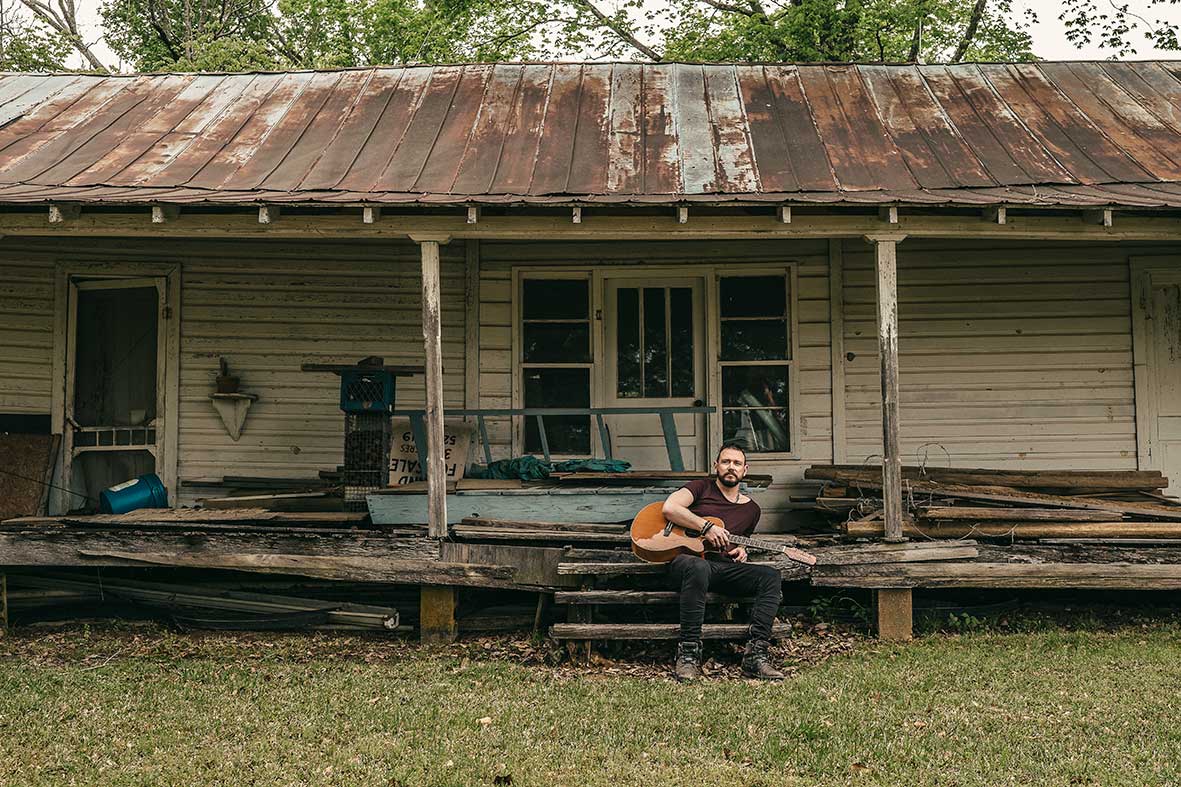
A musical road trip through the Deep South
Tennessee | Alabama | Mississippi
Peter and Andreas are really just two overgrown boys—their words. These two, these boys, they have a nearly borderline unhealthy interest in all things American music and culture. So, what better way to get to the bottom of it all then by sending these boys out into the wild. Hop in, we are setting off on a road trip through blues country.
Words and photos by Peter Eriksson
Taste these words: Alabama, Mississippi, Nashville, Tupelo, Memphis. Small boys’ dreams of America. There’s Elvis, blues, country music, but also there’s a darker more suppressed memory at the back of my mind—race riots and the brave souls fitting for their civil rights in a movement that defined so much of the contemporary history here. It’s on my mind. It can’t be forgotten or ignored. But for this trip, it is the music which is going to take center stage for my friend Andreas and I. We rent a Jeep, cause after all we are two overgrown boys, what vehicle could be more fitting for a road trip through the deep South.
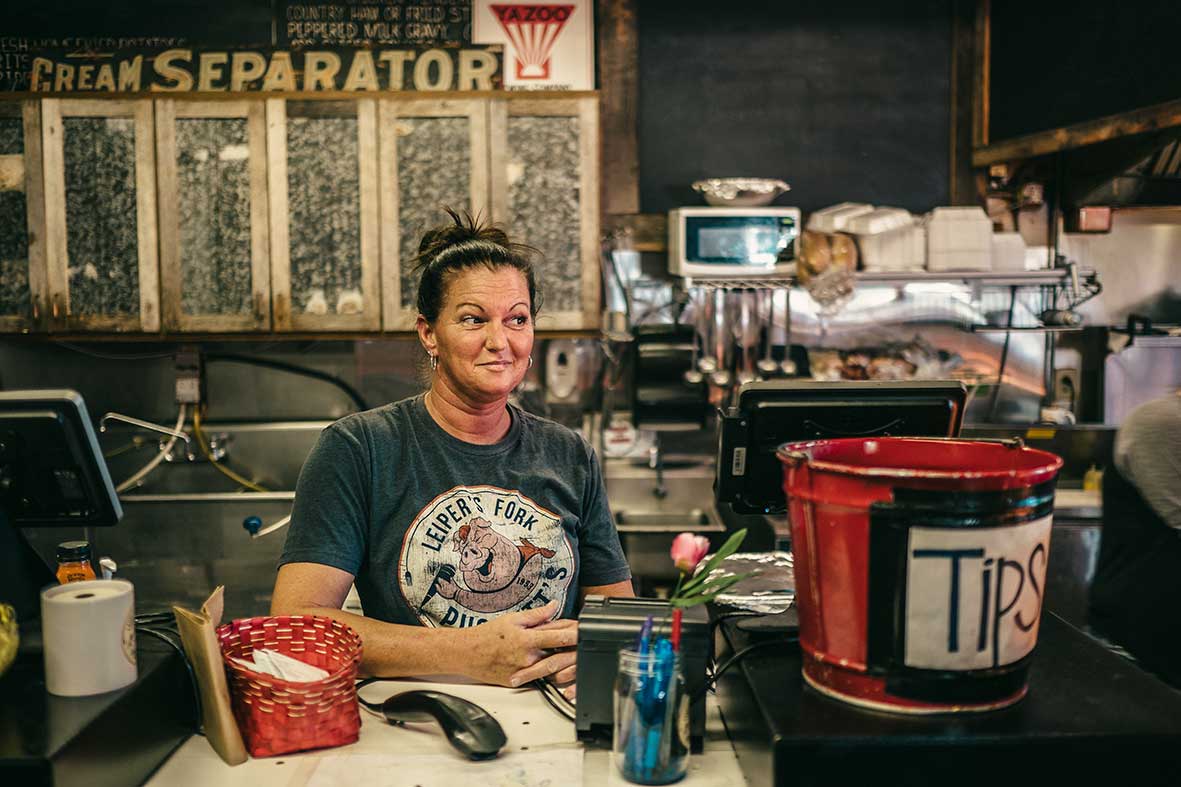
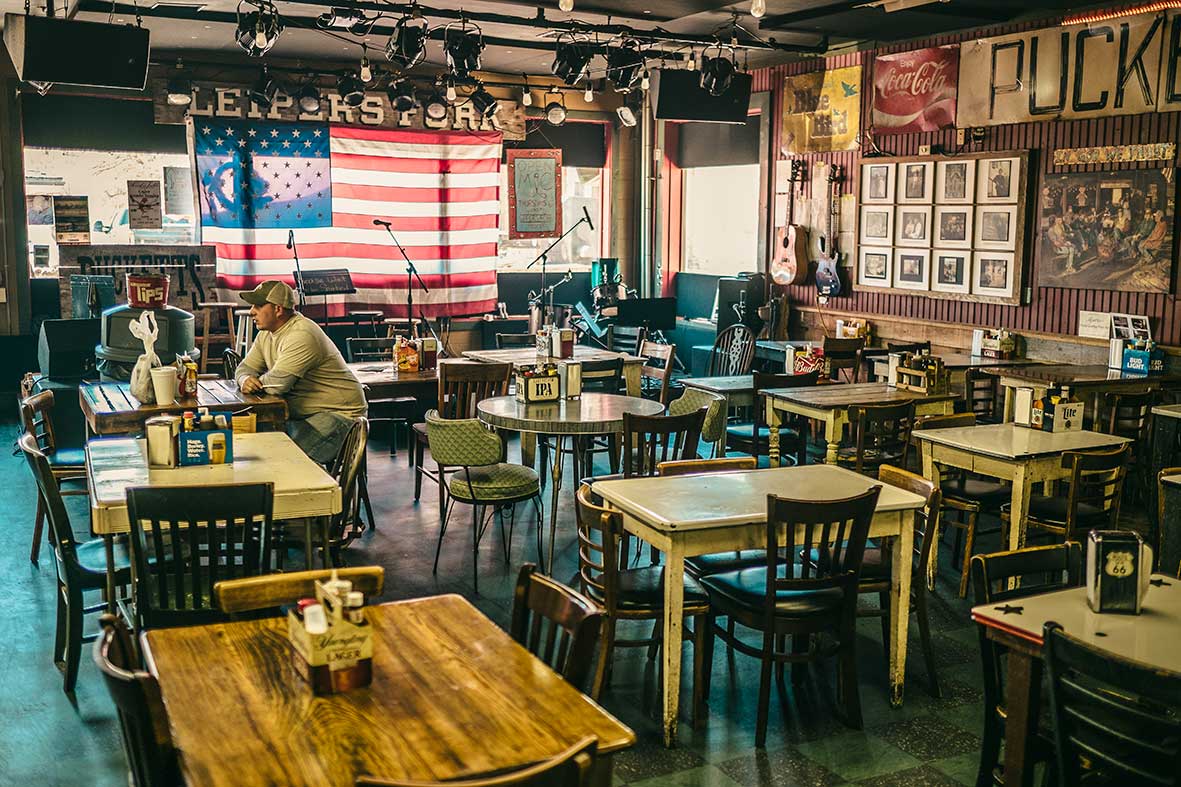
We start off from Nashville where we spend a few days (See issue 7) before heading out towards a charming albeit touristy town, Franklin. Mental images by the illustrator Norman Rockwell come to mind. Think the idealized smalltown America of the 50’s which was so romanticized. Onwards to Leiper Fork, where we take a coffee break and have a chat with Karen who is working behind the bar at Puckett’s Grocery & Restaurant—quite the combo if you ask me. You can buy your groceries, sit down to drink a beer, and while you’re at it have a steak, some barbeque, or a burger all in one stop. There are even some vegetarian options, which seems merely obligatory.
At Puckett’s there’s even a stage for live music. We like Leipers Fork, this place has got charm.
Natchez Trace Parkway
Leaving Leipers Fork behind us, we head up to Natchez Trace Parkway, one of the longest recreational and scenic driving routes in the US at a staggering 444 miles. The unusually beautiful road follows Natchez Trace, a historic trail that runs from Nashville in the north, to Natchez in the south. Along its meandering path, the road intersects The Trail of Tears. A trail which is named after the tragic and tear-filled forced relocation of countless Native American tribes, most notably the Cherokee, during the 1830’s. They say that at least one in five died along this forced march. There are a lot of interesting attractions along this route. One such stop is the place where Meriweather Lewis took his last breath. Lewis is most widely known for being the other half to the famous Lewis and Clark Expedition. Meriweather finished his days at the Natchez Trace milepost 385.9 in 1809. He is now buried at Pioneer Cemetery right nearby.
3614 Jackson Highway, Muscle Shoals
Turning off at Collinwood, we leave the Natchez Trace Parkway and head out towards Muscle Shoals, Alabama. Once there, we find the renowned studio of the same name—Muscle Shoals Sound Studio.
A young guy with a thick Southern drawl is our guide. He lists off and references the studio musicians that started this studio back in the 60’s: Barry Beckett, Roger Hawkins, Jimmy Johnson and David Hood, but you might know them as The Swampers. “Our boys”, as our guide calls them with an endearing hometown proud. Well-deserved pride, cause The Swampers have been behind some major successes in the music industry.
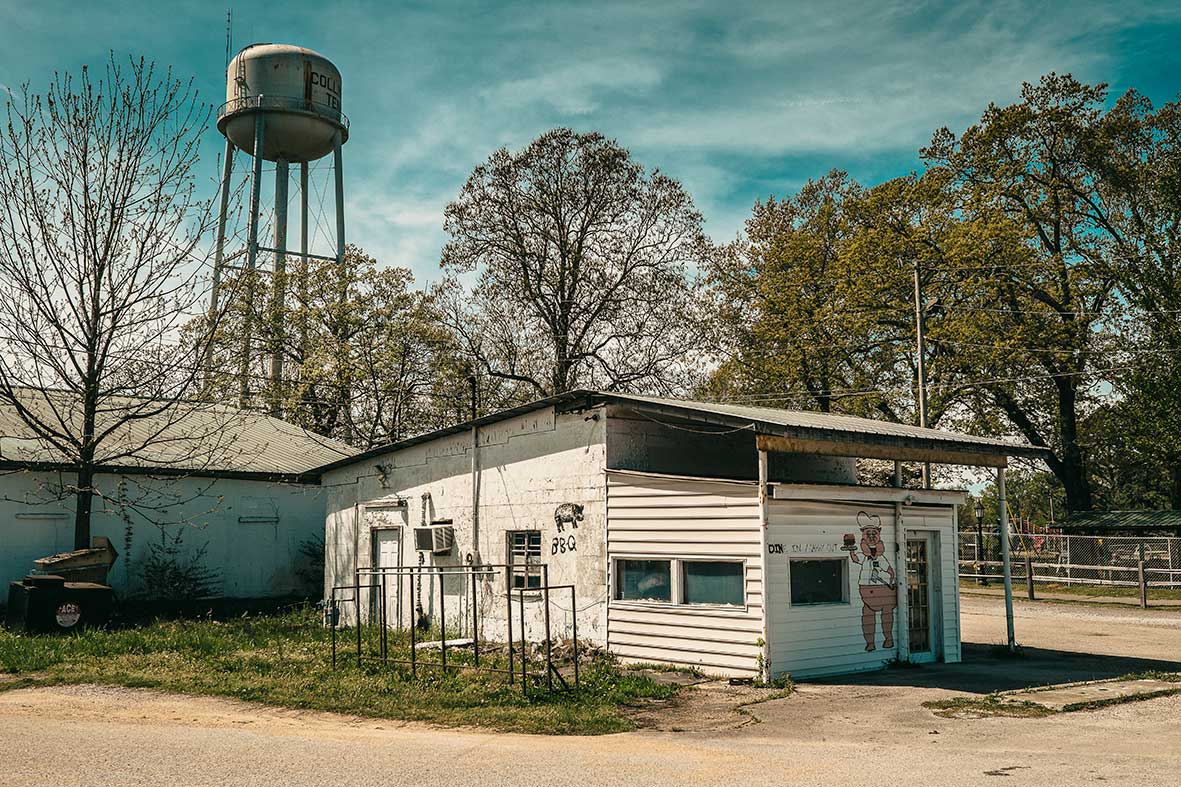
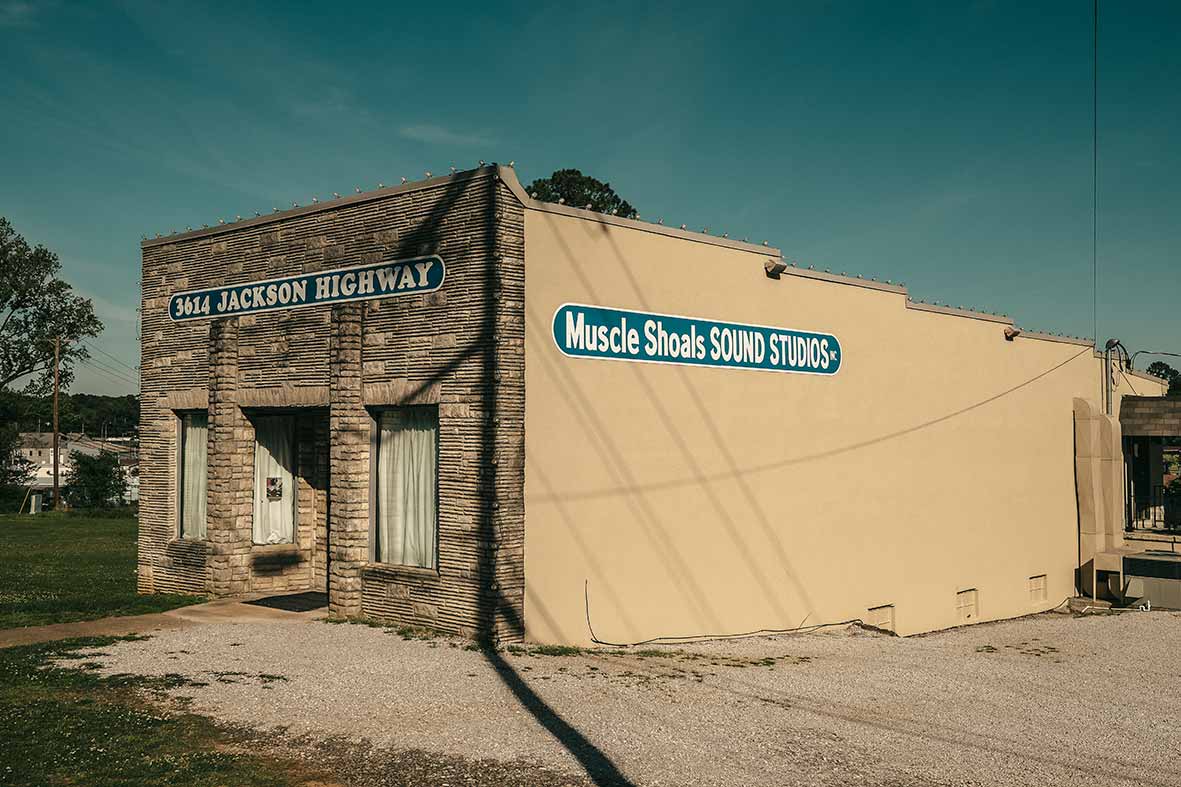
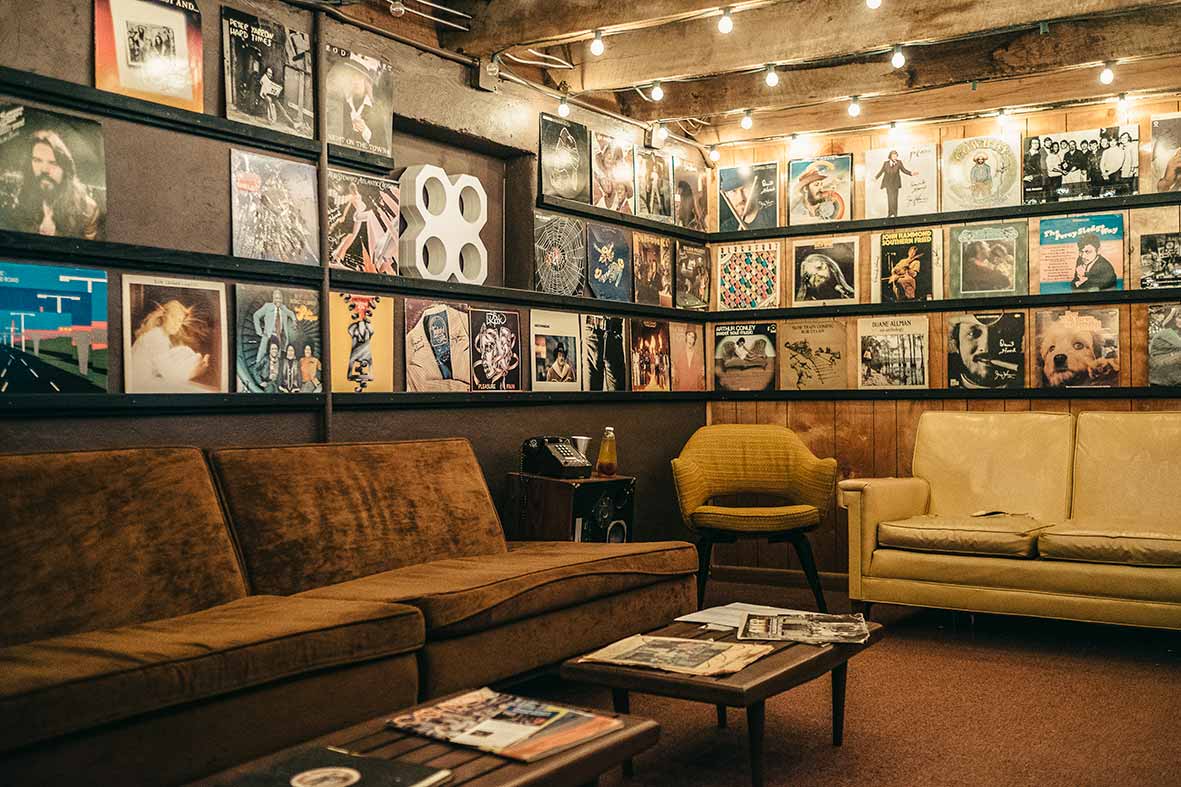
Rumors about the studio grew fast, and the number of musical legends that recorded there— either solo in the studio, or with The Swampers as their rhythm section—is innumerable. To name just a few: Aretha Franklin, Cher (who named her record 3614 Jackson Street after the studio’s street address) Willie Nelson, Lynyrd Skynyrd, Paul Simon, George Michael, Rod Stewart, Cat Stevens, Levon Helm, Bob Dylan and many more. Today the studio isn’t as bookable as it used to be, but Band of Horses and Black Keys have recorded here relatively recently.
The most legendary recording session, however, has to go to the Rolling Stones. The Stones didn’t have work visas for the USA but had a few free days during their tour. They decided to record three tracks at the studio: “Wild Horses”, “Brown Sugar”, and a cover of a blues song by Mississippi Fred McDowell, “You Gotta Move”—all found on their classic album, Sticky Fingers from 1971. Because they didn’t have visa papers, there is little evidence to show that they were ever in the studio. Save except for some small receipts for cassette tapes, which have been kept for your viewing pleasure.
According to the myths, Keith Richards finished writing “Wild Horses” while on the toilet at the studio. After the tour wrapped up our first question was if we could use the bathroom. The author is now proud to say that he too has now graced the same toilet where a classic Stones song was born.
Here at the Muscle Shores rehearsal studio, Willie Nelson and other legendary musicians have taken a drink—it feels more like a rec room from the 70’s until you see the amount of gold albums covering the walls.
Tupelo honey
The roads carry us onwards towards Mississippi and Tupelo, where we will stay for the night. We arrive in Tupelo late at night, stopping into a motel for some rest. In the morning we are up at the crack of dawn, like kids on Christmas morning, because we are on our way to see, “The birthplace of Elvis Presley”. The early birds got their worms, as we were the first visitors of the day. We peek in through the glass doors at the entrance to see three older women, well beyond their retirement years, prepping for the onrush of the day’s visitors. After buying tickets, we wait for our guide Nina to take us out to the shotgun shack where Elvis was born. We climb on in, and Nina sits herself down in an armchair. With a familiar voice, she begins to tell us about Elvis’s childhood. The house has moved from its original location, albeit not too far, and the interior is naturally not the exact same, but done up in a way that is representative of that moment in time. The Presley family wasn’t super well off, but it most certainly could have been worse.
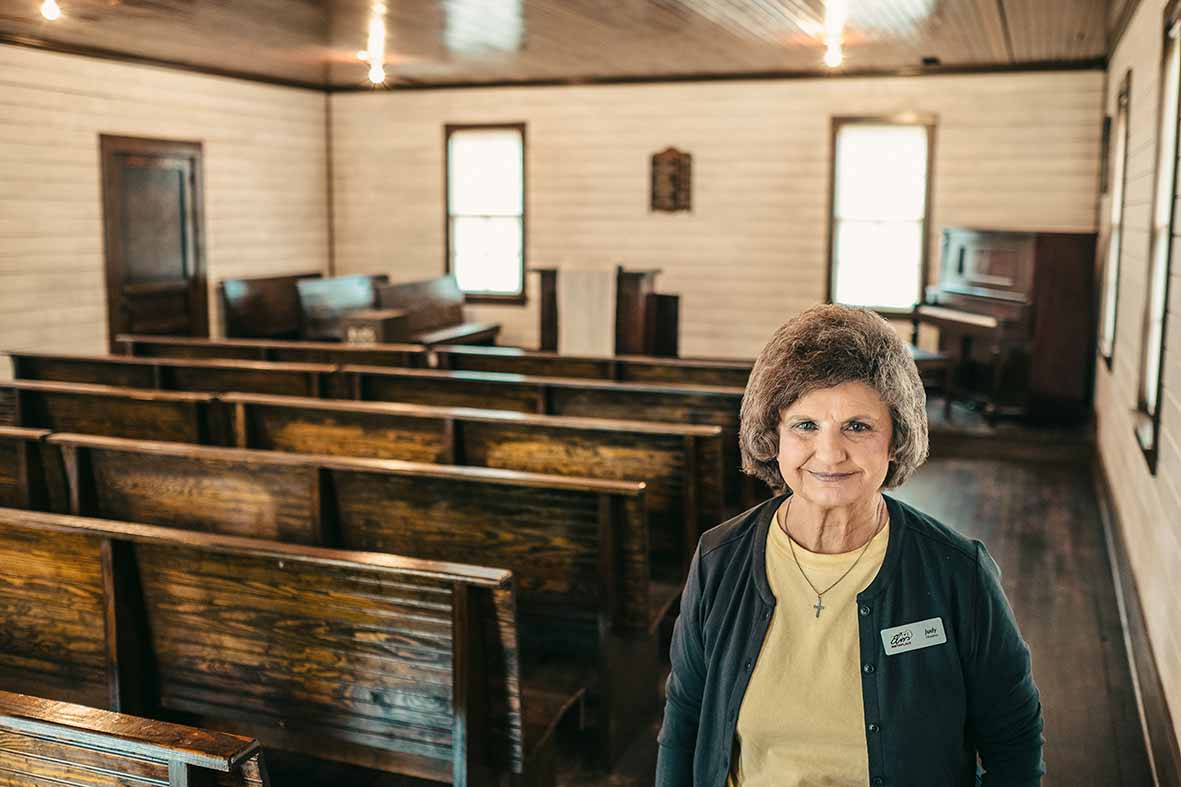
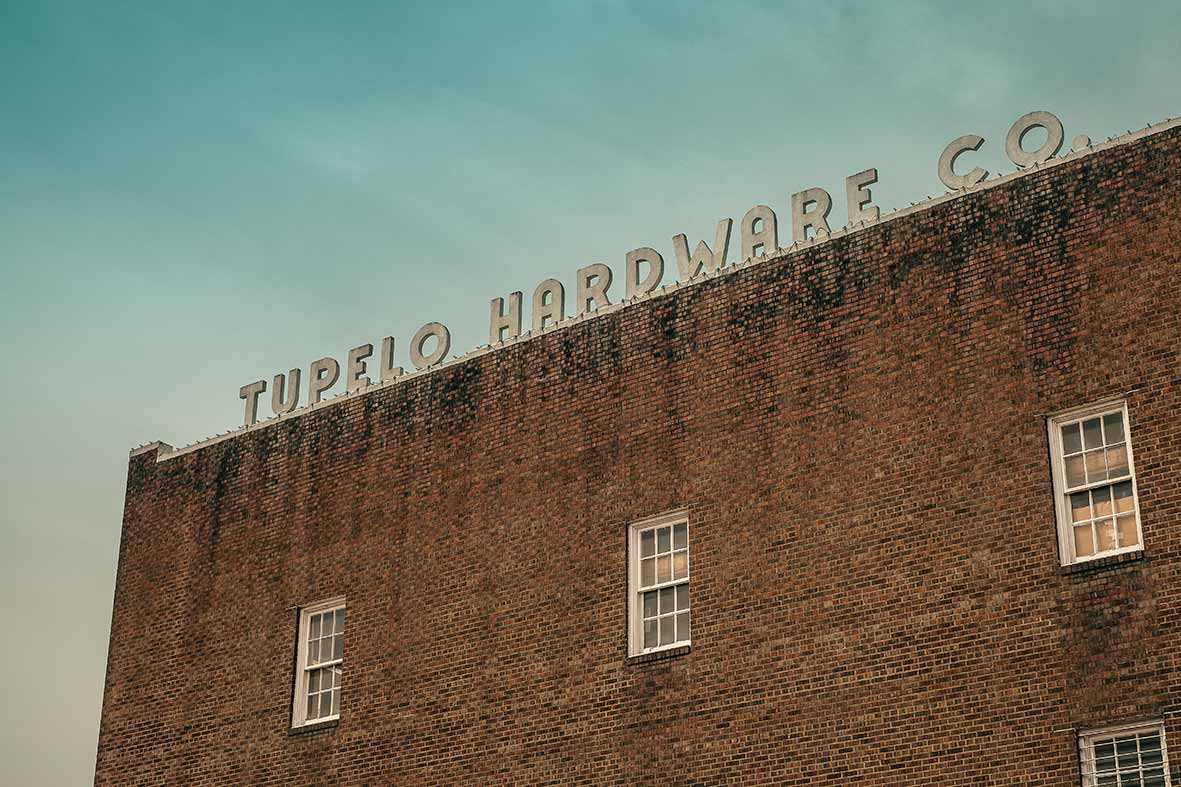
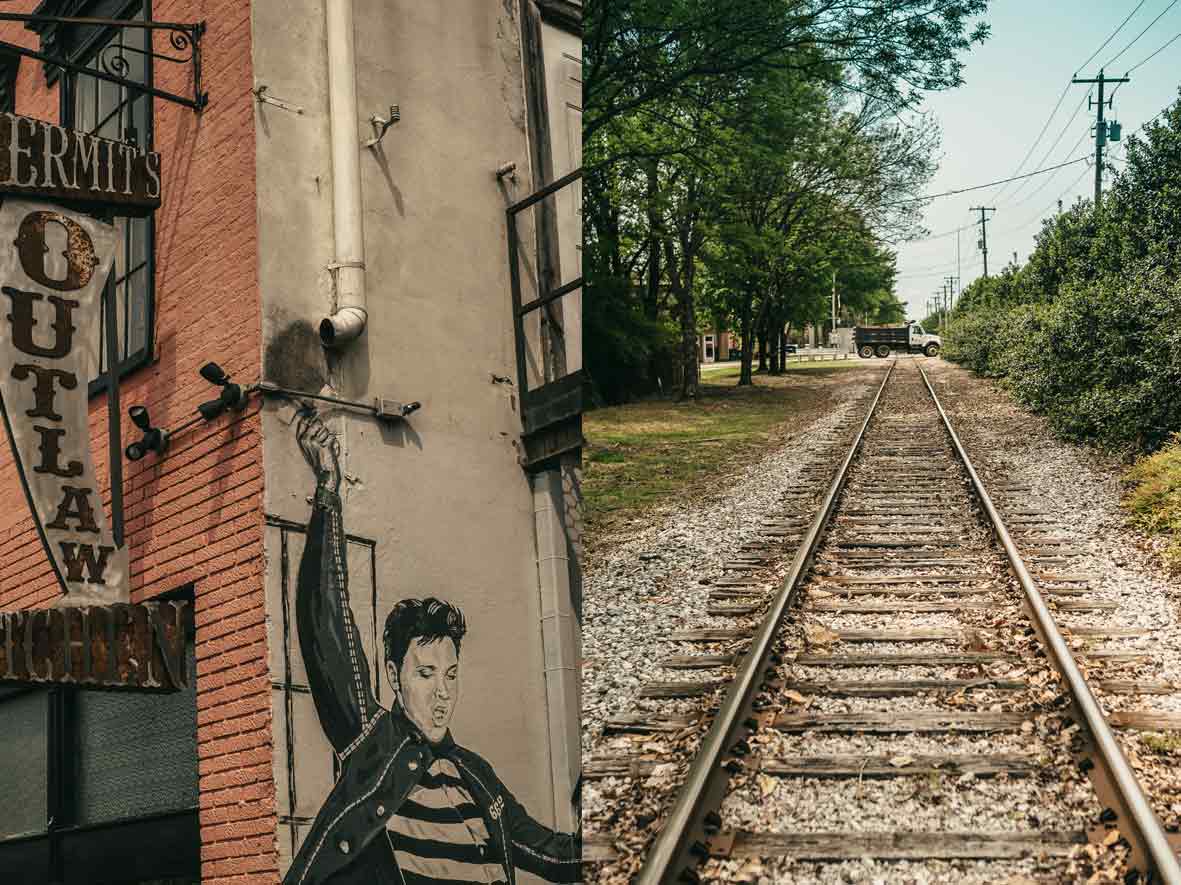
We wander on over to the church where Elvis had some of his first musical experiences. Judy, the guide here, has hair that not even the worst tornado could disturb. She snuck us into the church even though we hadn’t bought tickets for this separate experience, “Of course we have to see this, I mean we are already here”, really throwing on the sympathy, thanks Judy! The museum is charming in its obscurity, and the gift shop is jam-packed with irresistible kitschy souvenirs. A Christmas tree ornament in “solid brass” catches my eye, it’s coming home with me.
Another obligatory stop here is the Tupelo Hardware Store. It was here that Gladys Presley bought her little son his first guitar, the exact spot demarcated with a cross on the shop floor. Naturally, guitars are still sold here, a sure bet for a nice cash out when all of them Elvis hungry tourists come through the doors. Otherwise, it is a totally normal hardware store dating back to 1926.
Soul Food in Oxford, Mississippi
Time to shake a leg, daylight is a wasting. Soon we are back in the car on our way towards Oxford, a short drive of about an hour. Time for lunch, so we pop on into Ajax Diner, a nice little local treasure. I go all in, ordering up a heaping plate of deep-fried catfish, eggplant, okra and french fries. Yes, my arteries took a full barrage there, but hey this is soul food! I strongly recommend visiting this restaurant, you will walk away full and satisfied regardless of your then increased risk for heart attack. After lunch, we meander freely down to the main square to peruse some boutiques, of which, Square Books bookstore is a favorite.
Square Books in Oxford Mississippi has two floors full of books, and a wall lined with pictures of famous authors who have been here to visit.
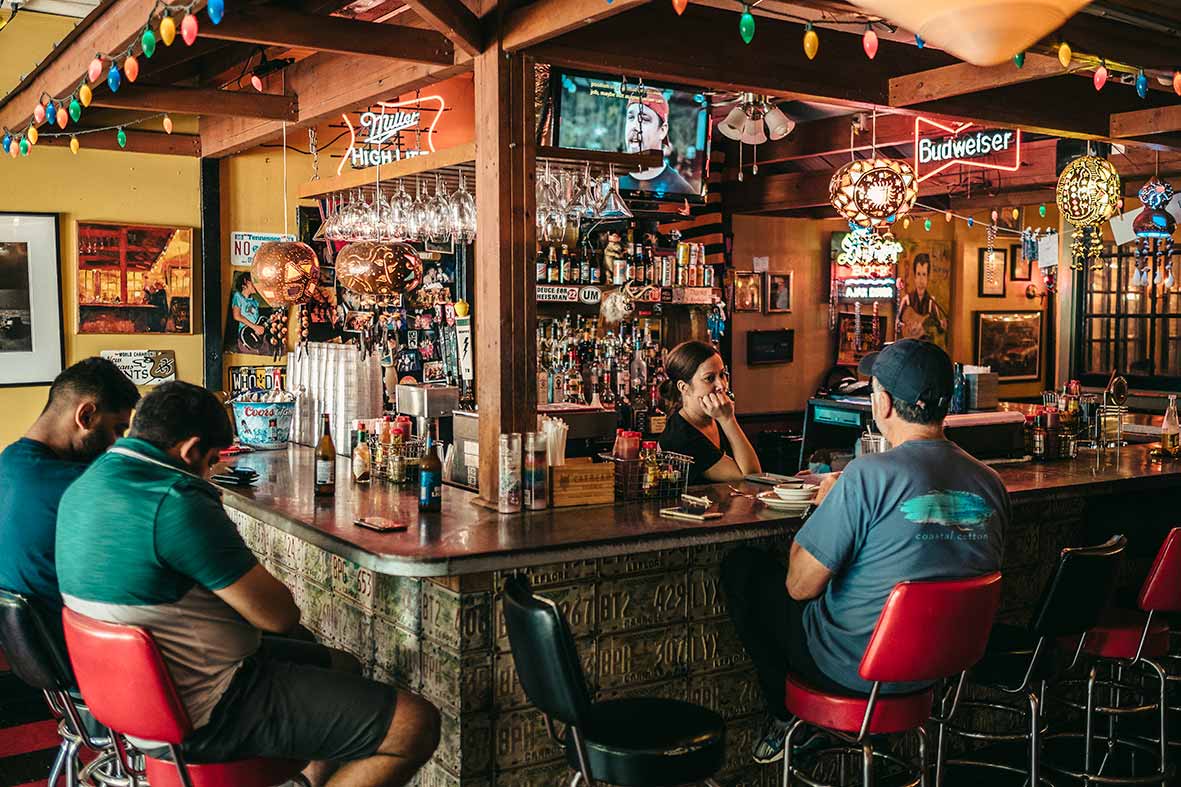
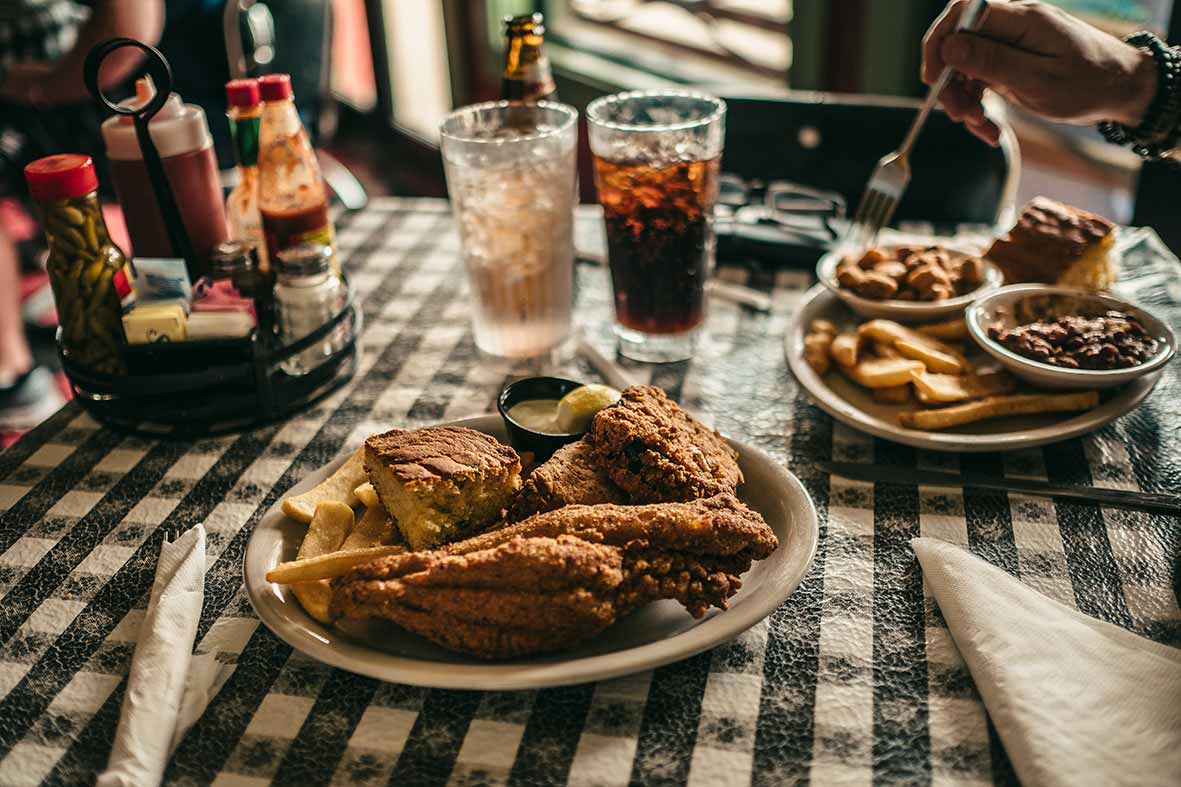
Oxford is home to the prestigious university, “Ole Miss” which was founded in 1844. The reason the town got its name was a sort of hopeful osmosis. By naming it after the British counterpart, the founders hoped to attract a major university, cementing its right as an intellectual hub. The plan worked—only in America! As with so many parts of the South, the racist and segregated policies of the past are hard to miss. It was here in 1962 that James Meredith became the first African American student to attend classes at Ole Miss after years of racial segregation. Bob Dylan’s song, “Oxford Town” is so deeply rooted in this particular moment in history. Music history abounds even here, a theme which also runs deep in the South. It was here that the record label, Fat Possum Records ‘discovered’ a bunch of old blues musicians in town like, T-Model Ford, Junior Kimbrough, and RL Burnside.
We stop for gas at a derelict gas station and were reminded of the ever-present class differences present as we made our way out of Oxford. Absent are the visibly well-to-do Caucasian intellectuals of the city center. Instead, here it is almost exclusively African in complexation. The few white faces seem like what I imagine a stereotypical ‘redneck’ might look like, the beefy pickup trucks probably had something to do with that. It is at this moment that I feel the revenge of my deep-fried lunch coming on and I ask if there is a customer toilet. “Yes sir, it’s right there in the back” said the young black man at the register, in a way that made me feel like a complete and utter stranger, which in fact I was. The toilet itself, not near as kind as the staff.
Harmontown, Mississippi
The journey takes us further to the small Harmontown of Mississippi Hill County. The place wound up on our roadmap because the blues legend RL Burnside, who was born and is buried there. We search for his grave for what seems an eternity to no avail. Almost a half year later I had the pleasure of meeting RL Burnsides son Cedric at a gig in Stockholm. He told us that we had simply taken the wrong turn and ended up at a different church. That’s life for you, so close yet so far away.
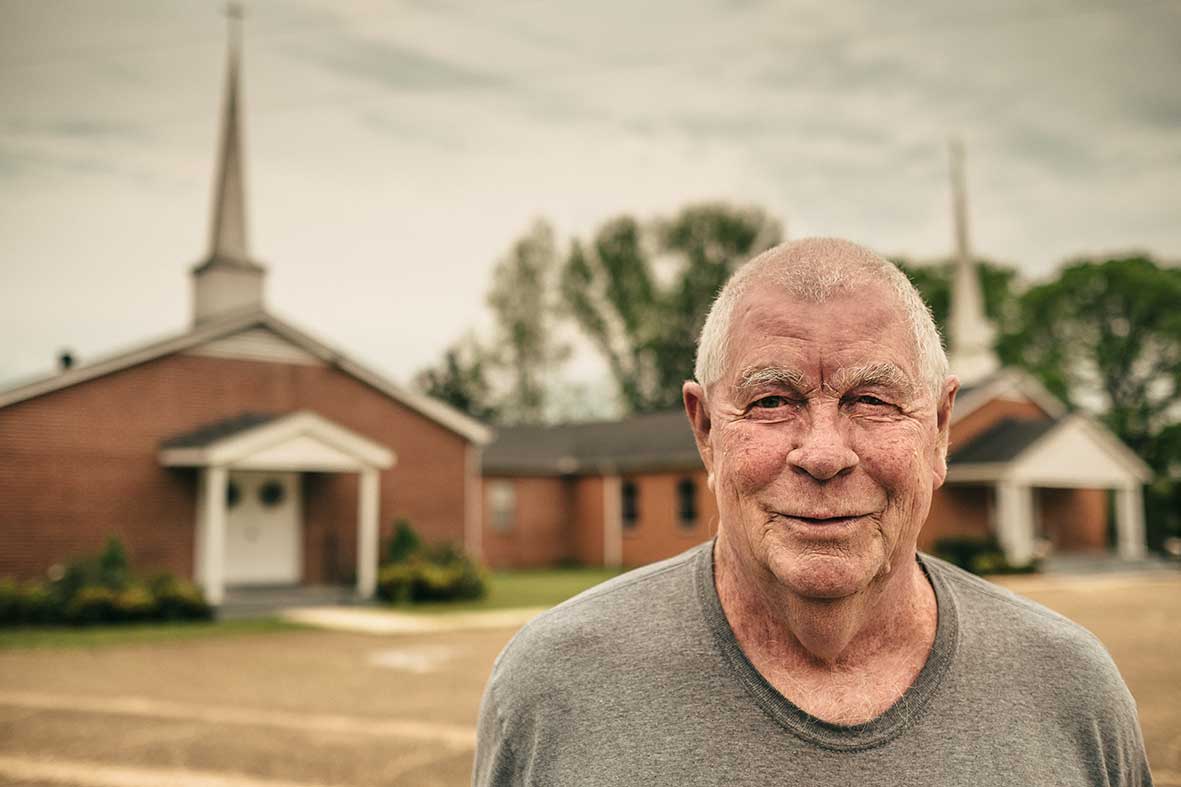
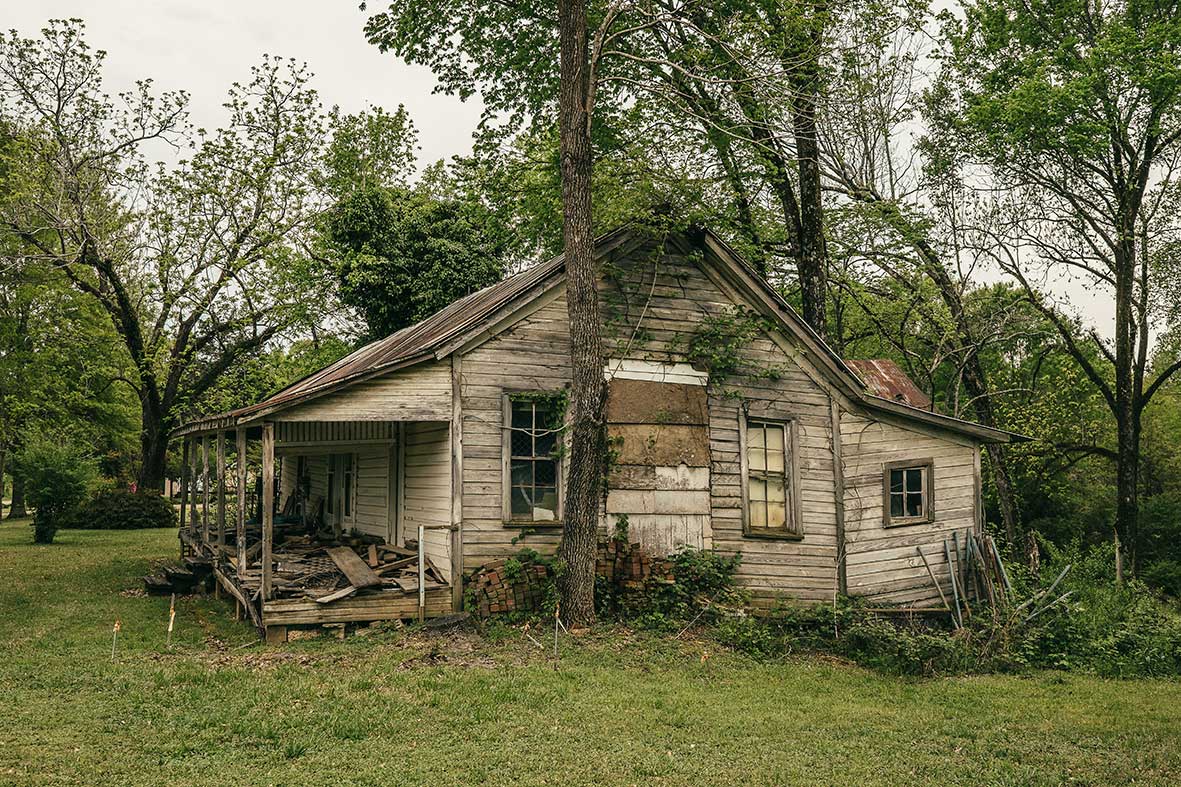
We wander around a bit in the small town where I find a classic ‘red dirt road’ and my mind instantly veers to thinking of Emmylou Harris and her fine-tuned tale of growing up hopeless in the song, “Red Dirt Girl”. After asking permission of course—we don’t want to end up on the wrong side of a double barrel shotgun, wielded by a guy in suspenders—we take a seat down on a front porch of an abandoned house. A school bus stops and lets out three kids some houses down the street, they wave as the skip along the sidewalk. For a few brief seconds I think to myself, “Yea, I could live here.”
´We get back in the car, drive onwards, and stop at the closest gas station. I take a few pictures of an overflowing dumpster out back when a Latino guy comes around asking, “Who are you working for?” I suspect that he believes I am some kind of inspector or something and when I explain that I am simply on vacation, he meets me with a sceptical look. After a few more follow-up questions he seems to believe this strange, albeit true, explanation for my interest in his garbage can. Andreas meanwhile bought a coffee from the tattooed woman working the counter. A few days later he got a friend request from her on Facebook.
´To wrap up this surreal visit, a man in a pickup truck came barrelling into the lot to fill up his ride. He had, and I promise you this, what must have been a nearly 20-foot-long tree dragging behind his truck. Not like strapped in under a tarp or anything, no. It was just stuck in there real good under the tail gate. “Hey, you know you got a tree stuck behind you?”, yelled out the gas station clerk. With a loud laugh the man who was driving exclaimed, “Yeah, I know.” He filled up his truck and drove off. Class act
Memphis
After some long and strenuous hours on the roads we finally hit our end destination—Memphis, Tennessee. We check in to a seedy Motel 6 with a suspicious looking dented door. We take an Uber to Beale Street, “The Official Home of the Blue” and “America’s Most Iconic Street” as stated by Memphis proper. Beale Street tonight is jampacked, absolutely full of motorcycles. “Bike Night” here on Beale Street, the noise and lights are exactly what you would expect. The sounds of revved up exhausts blends sweetly with the music pouring out from the bars which line the street. I exchange some words with Dupree, a gigantic guy from New Orleans with the ever-so fitting nickname, ‘Big Easy’.
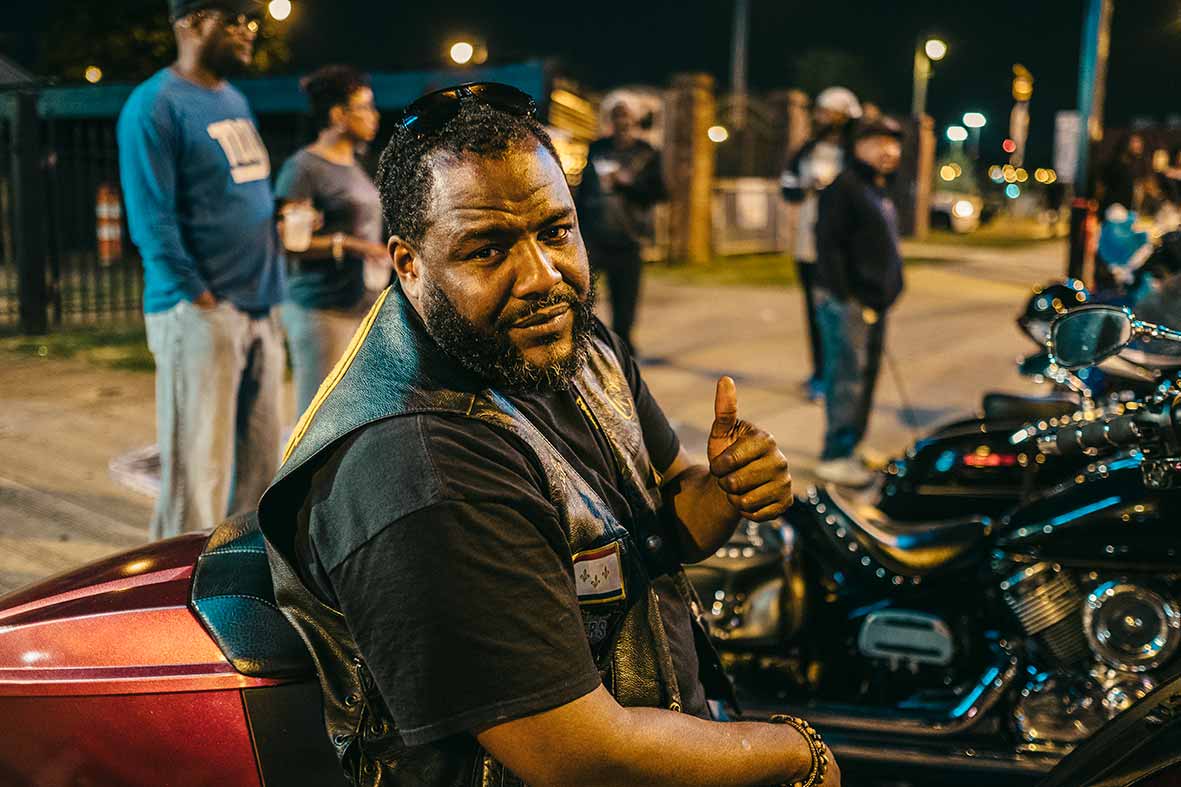
The night wraps up at B.B. King’s Blues Club, where an amazingly tight soul band is playing covers. They absolutely demolish the stage, some of the best live music we have seen. The peak of the show was of course when the unofficial anthem of the LGBTQ movement, “I Will Survive” started blasting—the dance floor went into a frenzy.
Sun Records
The schedule is daunting our last few days in Memphis. We start with the illustrious Sun Records.
Inside the studio we are given guided tour. There is something magical to find oneself in the same room where so many of rock n’ rolls’ pioneers breathed, worked, recorded, and blazed trails. Just think that this is the place where Elvis, Jerry Lee Lewis, Johnny Cash, and Carl Perkins all recorded their records—I was like a hog in shit, absolutely loving it.
It was here that the single, “Rocket 66” was recorded—often regarded as the world’s first rock song—written by a very young, Ike Turner. Sam Phillips, Sun Studios founder, had a favorite in the blues man, Howlin Wolf, for which he has been quoted saying, “This is for me. This is where the soul of man never dies.”
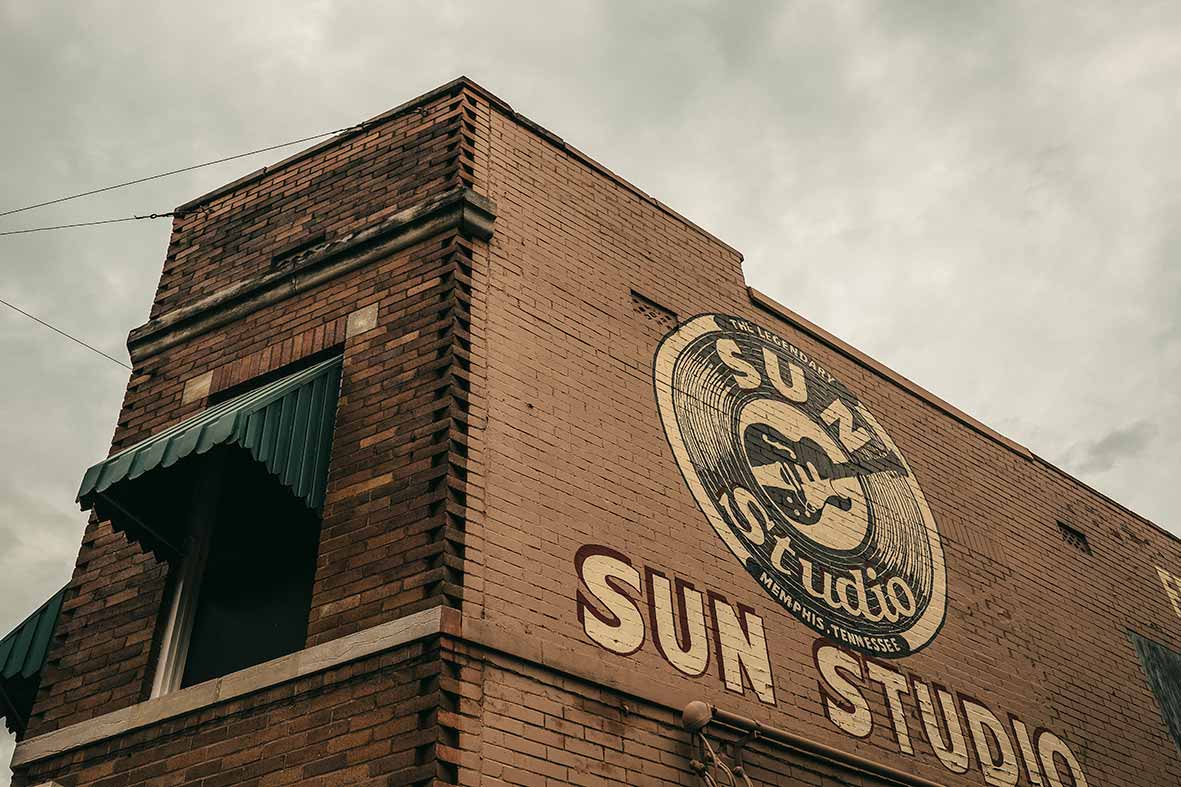
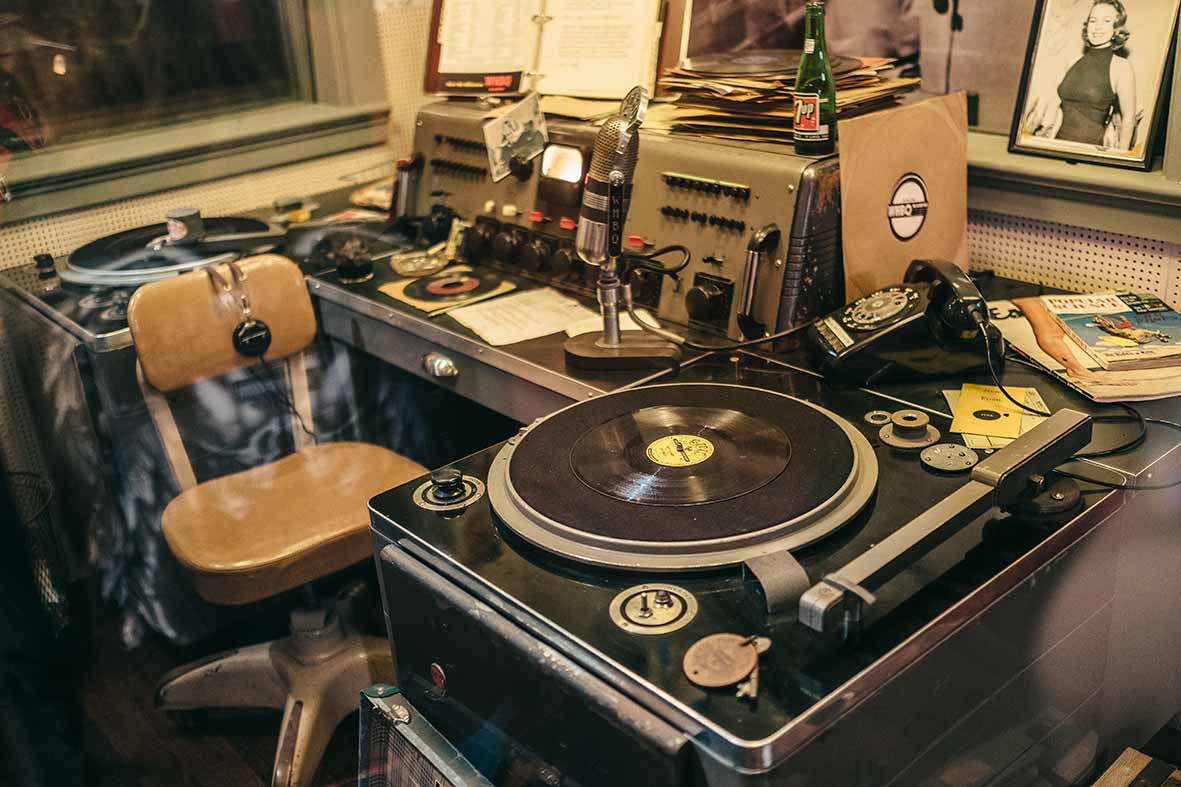
A nice little bit of trivia was mentioned by our guide, when he brough up the receptionist at Sun Studios, Marion Keisker. For when Elvis first visited the studio, Sam Phillips wasn’t around. Keisker instead was the one who sat in to record Elvis. According to Kesiker, this was the conversation with Elvis:
What kind of singer are you?
I sing all kinds.
Who do you sound like?
I don’t sound like nobody.
After the recording, Keisker noted that he was a, “good ballad singer. Hold.” The rest is, as they s ay, history.
Sensory Overload
Leaving Memphis behind us we set our course for Nashville, and I am left trying to sum up all the impressions experienced thus far—which is entirely impossible. Over the course of 72 hours and nearly 625 miles of driving, we have had experiences that could last the average joe, weeks or months with still some bits left to chew on. We got to see where rock n’ roll was born (and died), the American Dream (its face, and its backside). We have glimpsed at the racial injustices which still evoke strong emotions here. Seemingly, we have only scratched the surface, merely sniffed the fields of the blues. But there is always so much more to discover in “The Deep South” when it comes to music, history, culture—and of course, fried foods.
Bildtexter
Road to nowhere? Nope, road to Sweet home Alabama.eith Richards wrote the famous song Wild Horses and where the author did his thing.







